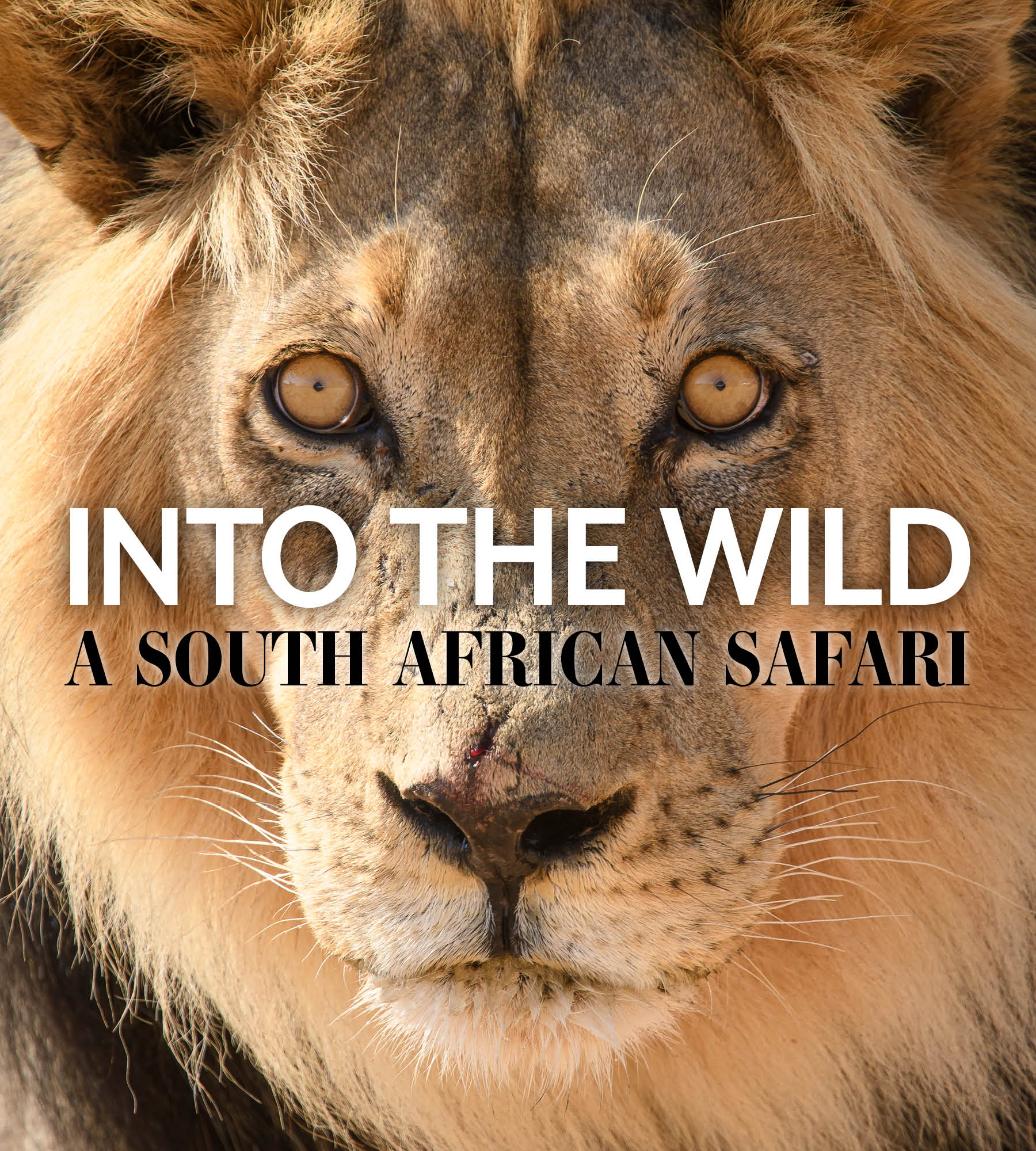Language
You can read the magazine in one of the following languages
Dumi, our guide, tells us there’s only one giraffe left as we stop along the rutted dirt road inside Kapama Private Game Reserve. Before us stands the largest terrestrial animal on Earth, knock-kneed, covered in russett patches and nonplussed.
“It’s incredible that we’re seeing him; I call him Geoffrey,” Dumi says.
We’re dumbstruck by our good fortune; we ask Dumi why there’s only one giraffe. “Ahh, they left the gate open. The others left,” he replies, with a face as straight as his achingly perfect teeth.
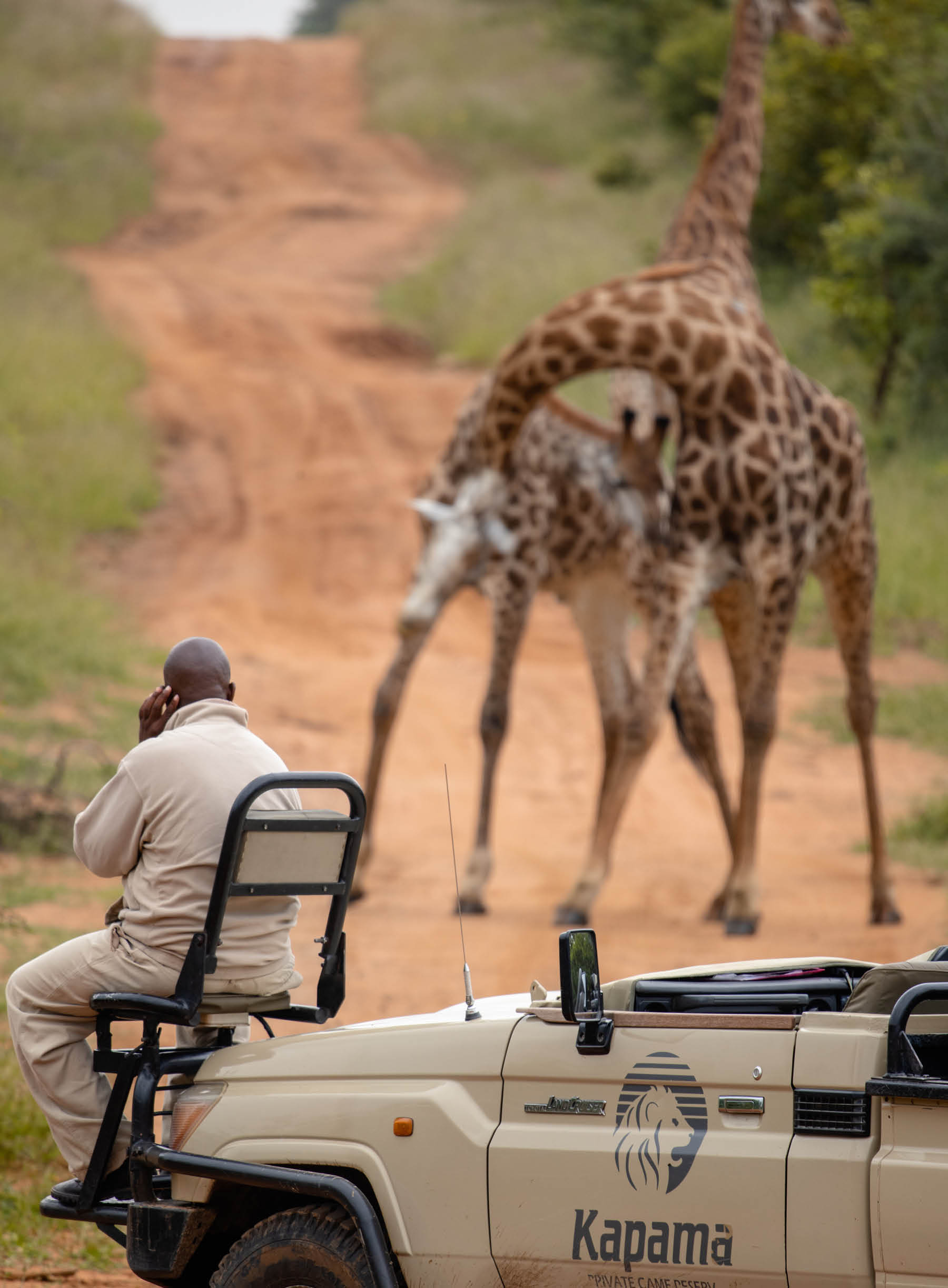
But there’s mischief in those eyes, and we realize he’s been pulling our leg. Soon enough, our safari group has gelled like a troop of baboons and we’ve taken to calling these asides #Dumifacts.
We learn over our game drives that there are many giraffes here, almost always found with their visually clashing brethren, the zebra. And spoiler alert: we manage to spot every single one of the Big Five of Africa (lion, leopard, rhino, elephant and African buffalo) on the first day, something that’s almost unheard of.
We quiz each other on the collective nouns of each animal we spot. Giraffes? If they’re standing, they’re a tower; if they’re moving, they’re a journey. And zebras? They’re a dazzle. This is not a #Dumifact.
Kapama was once a farm owned by grazier Johanne Roode and his wife, Lente, for their Bonsmara cattle. But this is South Africa and beasts roam these plains. The livestock were picked off like ripe fruits from a tree, so changing direction, the Roodes tore down the pens to welcome the assailants and provide them a safe place to simply exist.
The concept of eco-tourism had not yet taken hold, but the couple were unwittingly laying the groundwork for what would emerge as a vast sanctuary for African wildlife in the lowveld safari territory.
Over the years, its size has increased steadily to the now 15,000 hectares it conserves, and will grow responsibly as land and funds become available. Up to 90 percent of the staff are locals, born in and around the reserve. This place is in their blood.
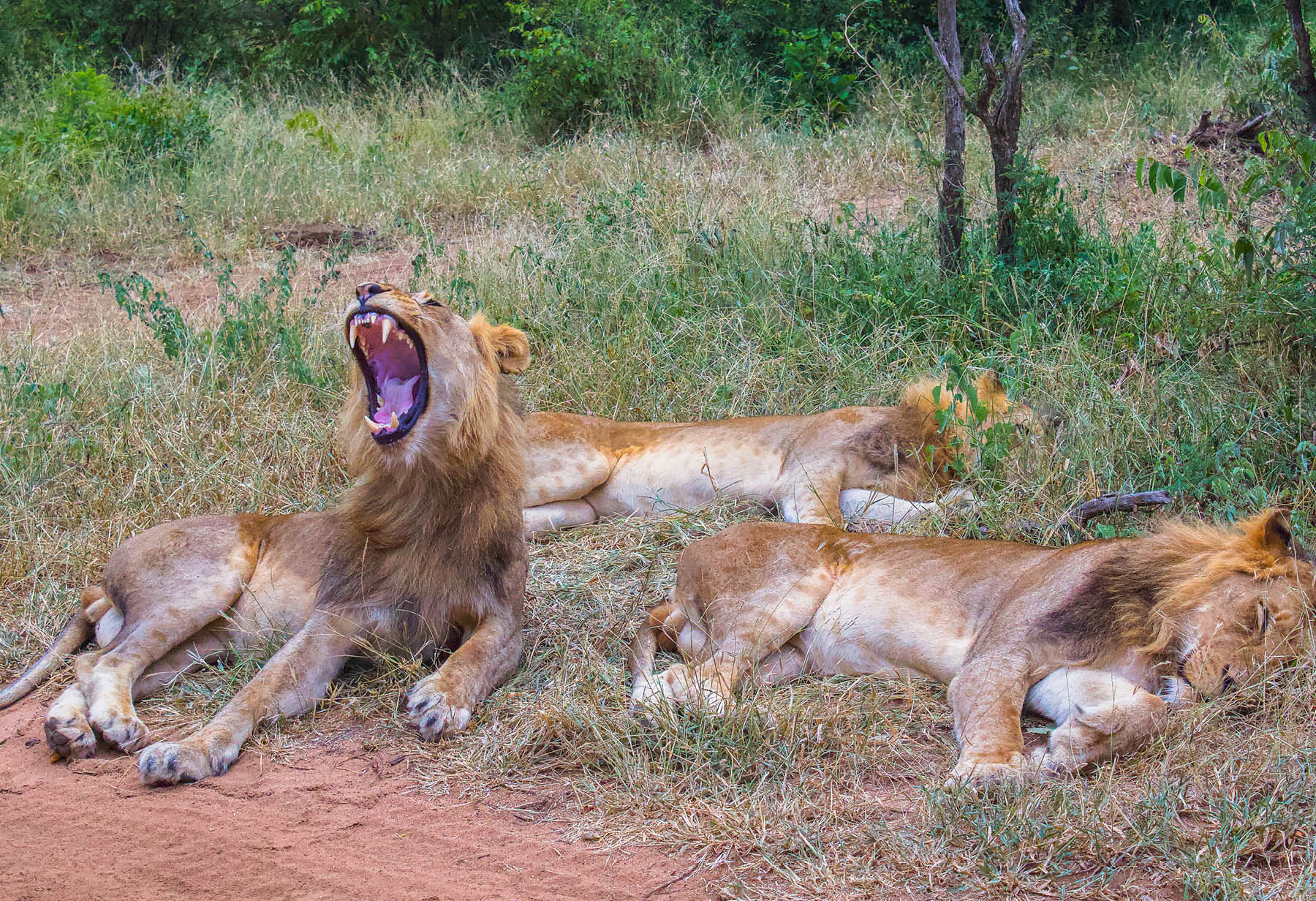
We manage to spot every single one of the Big Five of Africa (lion, leopard, rhino, elephant and African buffalo) on the first day, something that’s almost unheard of.
On our first day, the 5am wake-up call comes after I’ve already sprung out of bed. I’m the opposite of a morning person, but if anything can get my motor running in the wee hours of the cock’s crow, it’s the thrill of a safari sunup. I’d like a lion’s roar with my long black coffee.
At the lodge, after a stout coffee and something quick to stop our stomachs from rumbling, we load into our comfy 4×4 and aim for the bushveld, just as the clementine sun begins to peek out from the treeless peaks of the Drakensberg Mountains.
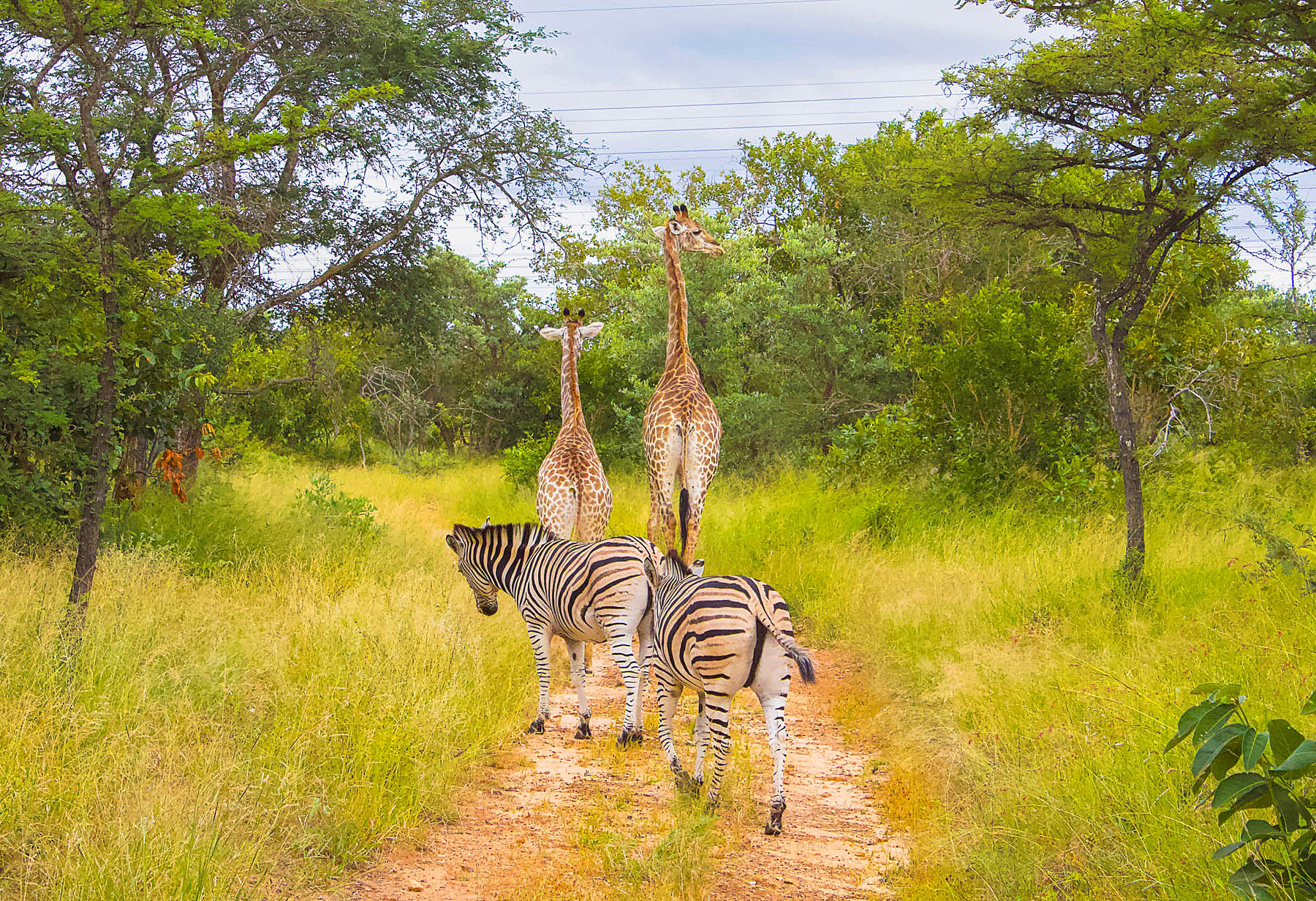
There are 21 National Parks and around 42 private game reserves in South Africa, but there’s plenty of confusion about how they’re managed and what they offer. As far as similarities go, perimeter fences surround all of South Africa’s major game reserves, including Kruger National Park, of which Kapama lies directly west.
Both form part of the Greater Kruger Park area. The boundaries exist for the twofold aim of shielding wildlife from human encroachment and combating poaching, but these are no zoos, mind you. Both offer opportunities for watching animals, and this is where the primary difference lies between the two.
National Parks are accessible to anyone in any type of vehicle. You’ll see two-door sedans, crowded converted buses, proper safari craft and everything in between. They’re required to stick to the paved road, and there are no off-the-beaten tracks to wander onto, so you’ll often find a convoy of cars stopped in front of a few rhinos (collective noun: a crash) hogging the view.
If you’re 10 cars back, well, you’re not seeing much of anything. At a private game reserve, the exclusivity grants intimate access. We rarely come across another safari jeep while we’re out.
We come so close to an elephant (collectively, a memory) that her eyelashes almost brush my cheek as she saunters past, and we watch as lions tear into a fallen giraffe’s abdomen, near enough that the maggots (a grumble) inside doing their job appear as undulating white wax dripping from the ribcage.

We come so close to an elephant that her eyelashes almost brush my cheek as she saunters past.
It’s more a spectator’s direct involvement in the existential idea of ‘wildlife’ than it is a tick box exercise in keeping score of what we’ve seen.
The animals see us as a large environmental object rather than as a collection of individuals or threats.
“They see the truck as a unit; they’re used to its shape,” Dumi explains.
That said, we’re told not to change the shape of the unit by standing up or leaning out, and wildlife does still maintain its healthy fear of us as well as its instinct to protect its young. Ever been warned to back off by a bull elephant? Bring extra underpants.
One of our favorite parts of going out on game drives is the bond that we feel from the shared experience. On our second day, we venture deep into the recesses of the bush, where we spot the bleached bones of an old rhinoceros skull. Dumi stops and checks with Arthur, our tracker, to make sure it’s safe for us to be here now and to exit the jeep.
Arthur is always with us, perched on a special seat above the left headlight where he constantly watches the road ahead for tracks. “Anyone want to hold it?” Dumi queries.
And I do. I do, I do; it’s like lifting an anvil. This one was the victim of poachers. He and Arthur still remember when it was found five years ago.
“It’s barbaric what they do,” he tells us. “They use a machete and dig it deep into the face so they can get to the horn. They just cut it out; it’s horrible.”
They’ve had other rhinos survive such savage assaults; today, there is a robust anti-poaching presence.
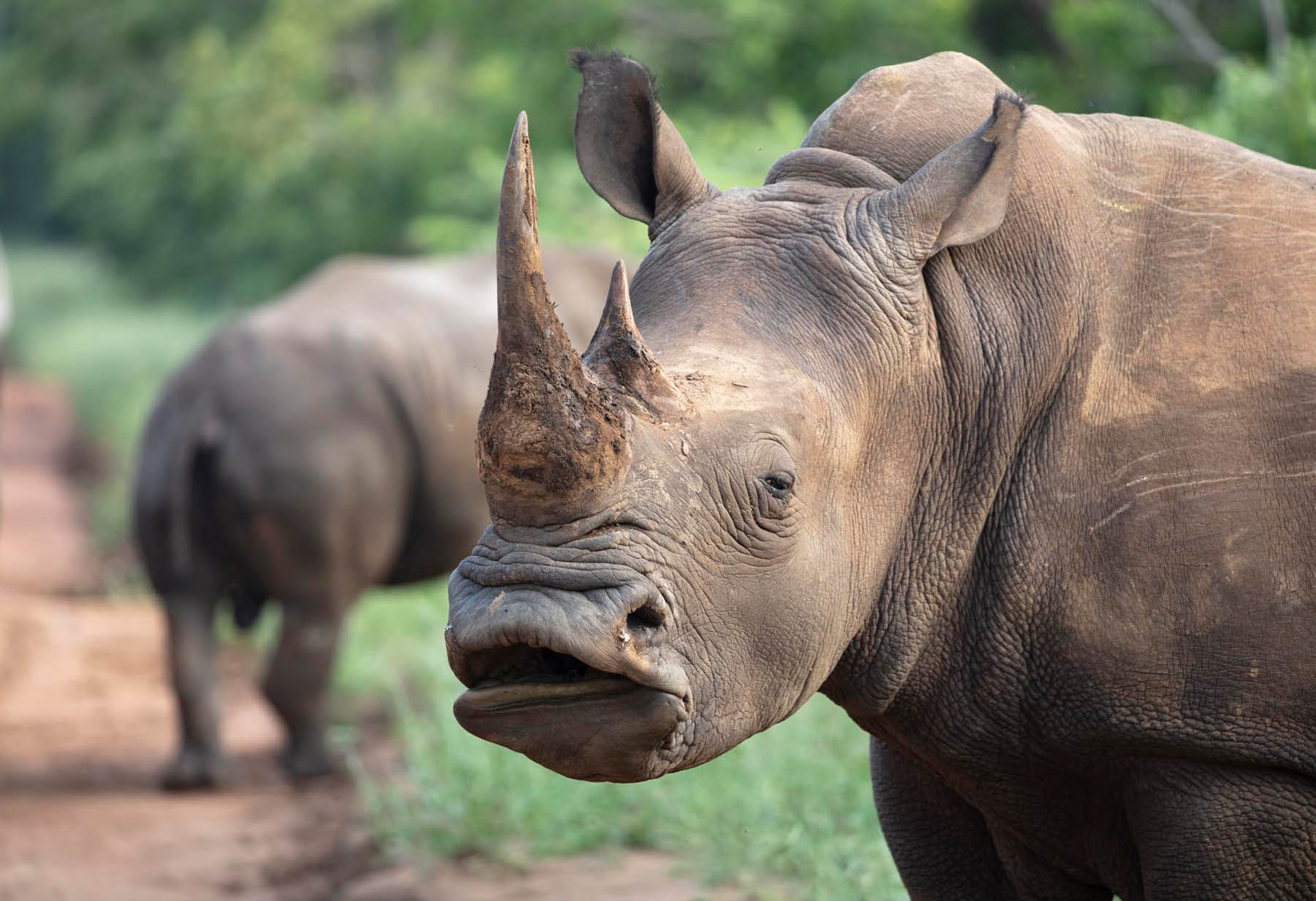
On our second day, we venture deep into the recesses of the bush, where we spot the bleached bones of an old rhinoceros skull.
We never know what we’ll find when we stop for sweet sundowners; it’s always at a different place. Dumi again checks with Arthur and gets the proverbial thumbs up before we step down from the vehicle. As we stretch and chat, they get to work pulling out an ice chest that’s chockablock with beverages and nibbles, and set a small table with a cloth. It’s all very Out of Africa.
We meander a bit, never too far, and find jawbones in the dirt – a few teeth here and there. Today, we’re on a bit of a plateau that overlooks a glassy pond about 300 meters away. Our eyes are peeled for hippos (collectively, and most appropriately, a bloat) and for ripples to indicate their presence. But we see none, at least not here. Arthur wouldn’t have let us stop if there had been.
Before we pack up, we’re treated to another #Dumifact. “Is a zebra black with white stripes or white with black stripes?” he asks.
We’re not sure but hazard a guess anyway. Those perfect teeth again, grinning like the Cheshire cat, and we just know that a whopper is on the way.
Dumi tells it best.
Travel with purpose – book your own safari with Adventure World on www.adventureworld.com.au
